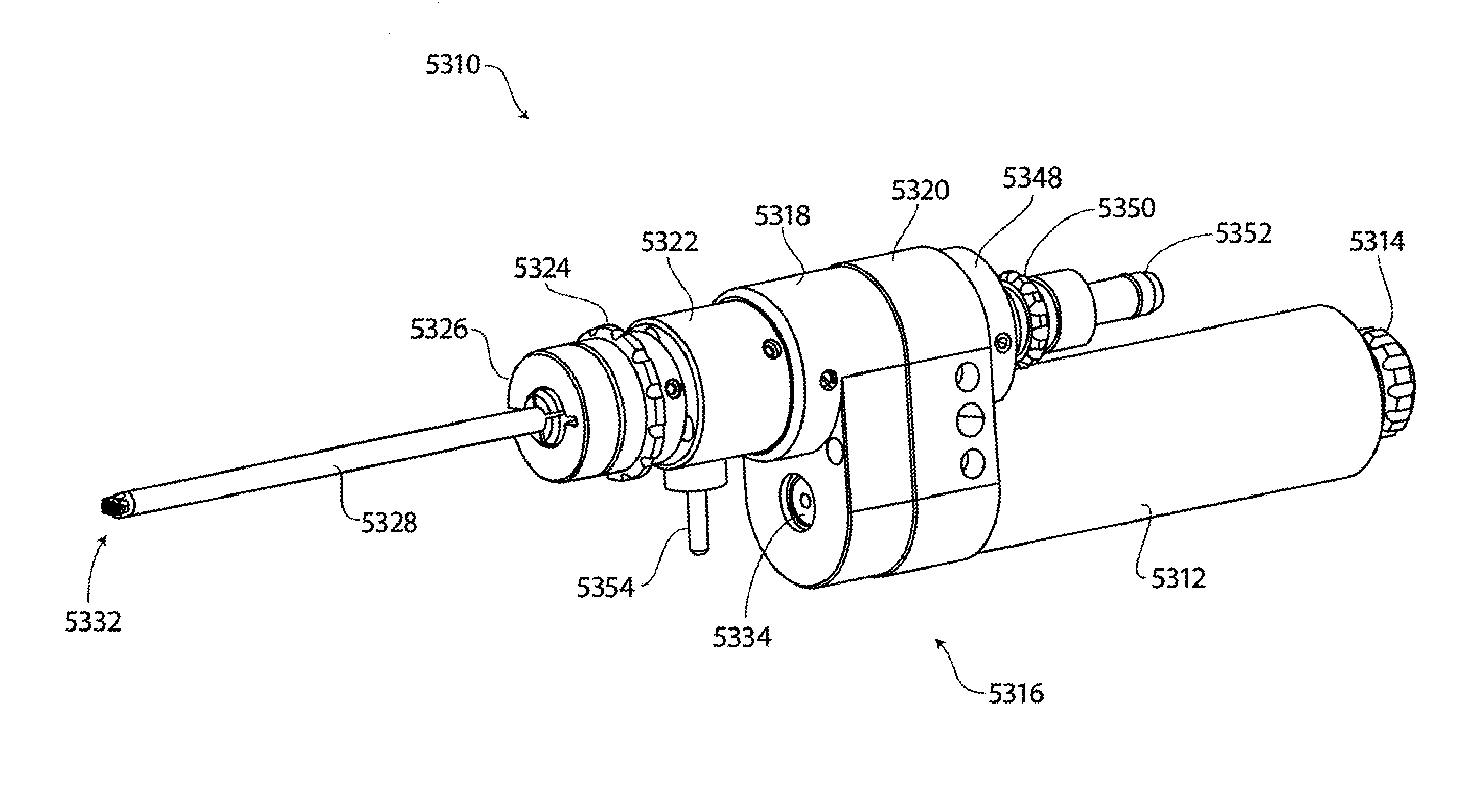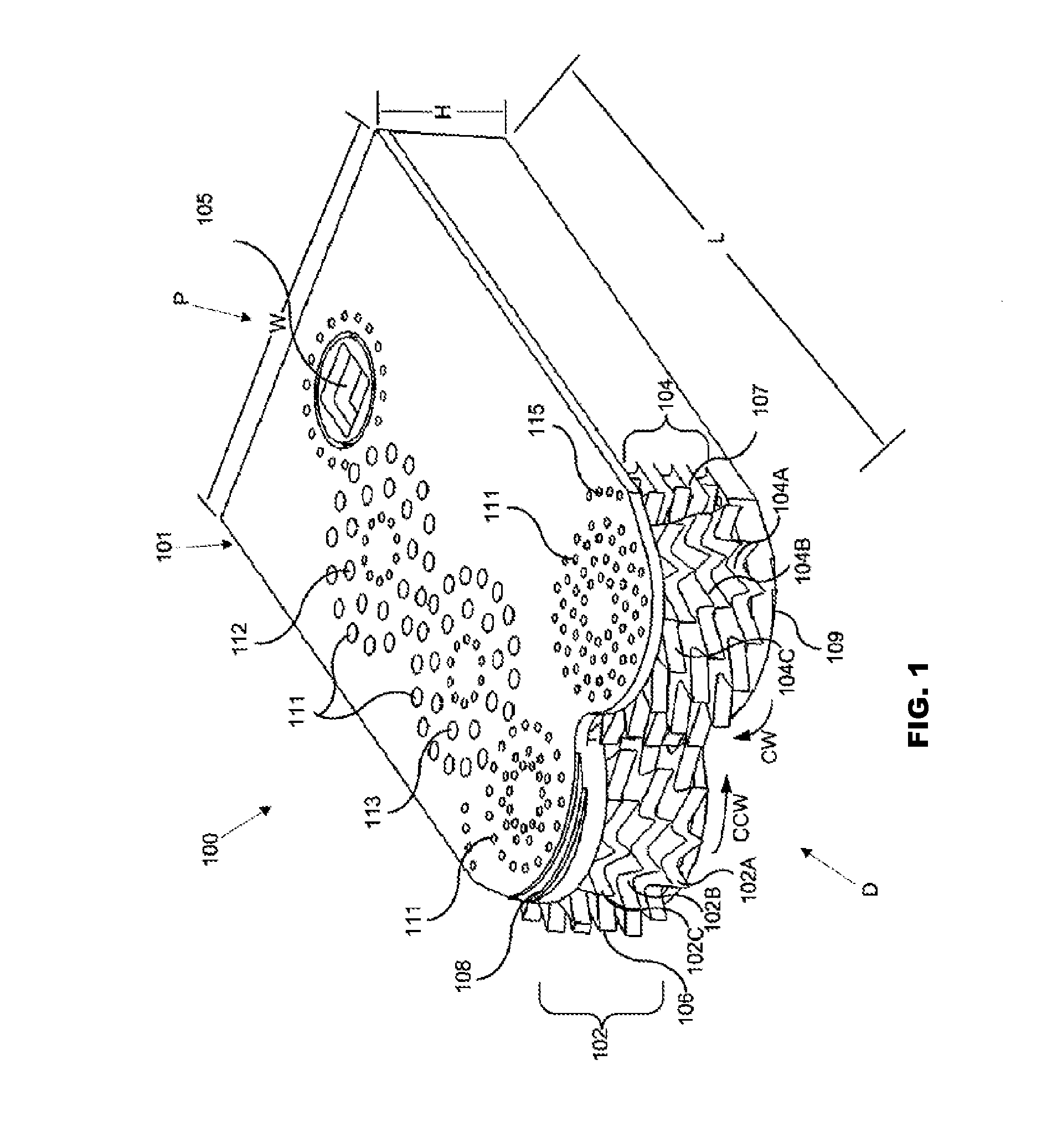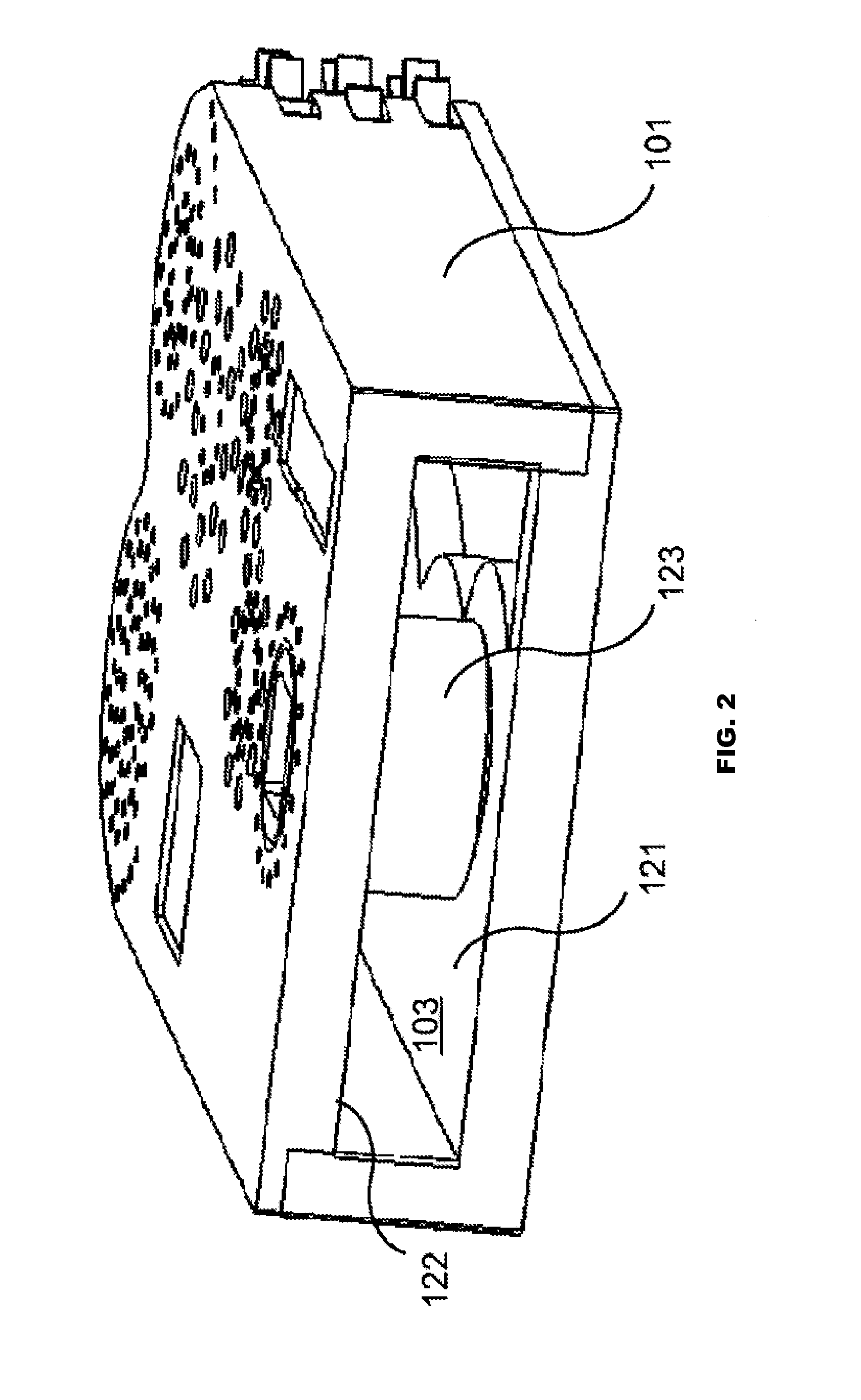Micro-articulated surgical instruments using micro gear actuation
a micro-articulation, surgical instrument technology, applied in the field of micro-articulation surgical instruments using micro-articulation gear actuation, can solve the problems of clogging the tissue removal lumen, affecting the healing effect of the subject,
- Summary
- Abstract
- Description
- Claims
- Application Information
AI Technical Summary
Benefits of technology
Problems solved by technology
Method used
Image
Examples
Embodiment Construction
[0047]FIGS. 1-3 illustrate an exemplary embodiment of a working end of a tissue removal device, which can be fabricated wholly or in part by electrochemical fabrication techniques, such as those described or referenced herein. Tissue removal device working end 100 has a distal region “D” and proximal region “P,” and includes housing 101 and blade stacks 102 and 104. Blade stacks 102 and 104 include a plurality of blades 102A-102C and 104A-104C, respectively. Three blades are shown in each stack, although the blade stacks can have one or more blades. Each of the blades includes a plurality of teeth 106 (see FIG. 3), some of which are shown projecting from housing 101 and configured to engage and process tissue. Processing tissue as used herein includes any of cutting tissue, shredding tissue, capturing tissue, any other manipulation of tissue as described herein, or any combination thereof. The working end of the device generally has a length L, height H, and width W. Housing 101 can...
PUM
 Login to View More
Login to View More Abstract
Description
Claims
Application Information
 Login to View More
Login to View More - R&D
- Intellectual Property
- Life Sciences
- Materials
- Tech Scout
- Unparalleled Data Quality
- Higher Quality Content
- 60% Fewer Hallucinations
Browse by: Latest US Patents, China's latest patents, Technical Efficacy Thesaurus, Application Domain, Technology Topic, Popular Technical Reports.
© 2025 PatSnap. All rights reserved.Legal|Privacy policy|Modern Slavery Act Transparency Statement|Sitemap|About US| Contact US: help@patsnap.com



